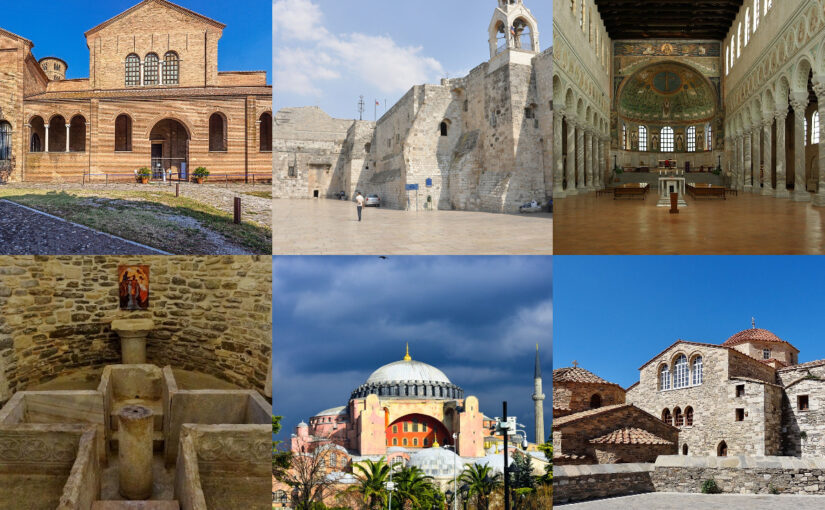The Mediterranean basin, a crossroads of commerce, culture, and conquest, became the cradle of Christian architectural innovation in the centuries after the Roman Empire’s dramatic turn toward the cross. When Emperor Constantine embraced Christianity and legalized its practice in the early 4th century, the region’s sacred landscape began to transform in earnest. What started as clandestine gatherings in homes or repurposed halls soon exploded into a bold new visual language of worship. At its beating heart stood the basilica, a shape borrowed and transformed; its stones are the quiet witnesses to an epochal shift from imperial Roman grandeur to the humility and mystery of Christian ritual.
The Emergence of a Spiritual Architecture
For centuries, Roman temples reigned as the architectural stars of Mediterranean cities, with columns soaring and interiors reserved for priests and gods. These spaces, designed for dramatic sacrifices before crowds gathered outside, were ill-suited to the more communal needs of Christian worship. Christians desired interior gathering spaces where the faithful could sing, pray, and partake of the Eucharist together. They wanted to encircle sacred mysteries at the altar.
Enter the basilica. Originally, it served as an urban hall for law courts and business, featuring a long central nave (main hall), side aisles separated by columns, a lofty ceiling, and a rounded apse at one end. Repurposed for Christian use, the basilica became the iconic form of early church construction. It was practical, flexible, able to accommodate growing congregations, and offered focal points for relics, processions, and teaching.
This redesign was more than technical. It was symbolic as well. The apse received the altar, marking the holiest space with architectural emphasis. Many basilicas adopted an eastward orientation toward the rising sun, recalling resurrection and new beginnings. Entry forecourts, sometimes called atria, provided space for catechumens (those preparing for baptism) and civic rituals before plunging into the dim, incense-laden interior, which served as a prelude to spiritual transformation.
Constantinian patronage and the wealth of a legalized faith spurred a construction boom. Imperial backing meant grander sites, better materials, and access to artisans familiar with the finest marble, mosaic, and stonework the empire could offer. These investments were as much about asserting the new public identity of Christianity as they were about beauty or permanence.
From Basilica to Domed Wonder: The Byzantine Revolution
As the Mediterranean world drifted eastward with the founding of Constantinople (modern Istanbul) as a new capital, architectural tastes evolved as well. Beginning in the 6th century, the Byzantine mind reimagined the Christian church, not just as a linear hall but as a cosmos in miniature. The plain wooden roofs of many Western basilicas gradually gave way to soaring domes. These were technical marvels that seemed to suspend heaven itself above worshipers, with surfaces sparkling with gold, glass, and colored tesserae.
A new architectural vocabulary emerged. Centralized, domed spaces became the signature of Byzantine churches. The dome, especially when ribbed or resting on a square base by means of pendentives, evoked the eternal, celestial sphere. Light filtered through high-set windows and flooded interiors with shifting moods and layered symbolism. This effect suggested the divine presence illuminating earth.
Technical inventions appeared alongside logistical revolutions. Imperial workshops produced standardized marble fittings. Craftspeople traveled the empire. Patronage became both a religious and political act, inscribing families, rulers, and communities into the Christian story as it was carved in stone.
Artistic Innovation and Sacred Space
The artistry of these centuries found its purest expression in mosaic, a medium that thrived in dim interiors. It gathered and reflected candlelight to turn walls and vaults into shimmering scenes of saints, angels, and biblical narratives. Marble screens and inlaid floors, rich capitals, and decorative bands of stone all contributed to an immersive environment. These embellishments were not mere ornament. For the faithful, they were bridges to the eternal and windows into an illuminated world beyond mundane sight.
There was careful choreography to space and sound. Acoustic studies show that domed Byzantine churches could fill with a mystical resonance, with the chanting of choirs and clergy swirling upward in echoing spirals. Sacred light, directed through high windows or filtered curtains, guided attention toward the altar, the dome, and the saints peering down from above. The architecture was designed as much for heavenly encounter as earthly shelter.
Four Icons of an Era
Let us pause before four remarkable survivors, each representing a chapter in the Mediterranean’s architectural invention.
The Church of the Nativity, Bethlehem (326 AD, Early Christian)
Founded under Constantine and his mother Helena, the Church of the Nativity stands over the traditional birthplace of Jesus, a true magnet for Christian pilgrimage. Its broad basilican nave, lined with ancient columns, leads worshipers toward the softly lit grotto beneath the altar. Amid wars and reconstructions, its essential layout endures. This church anchors faith in stone and ritual and blends imperial grandeur with a humility that befits the story it houses.
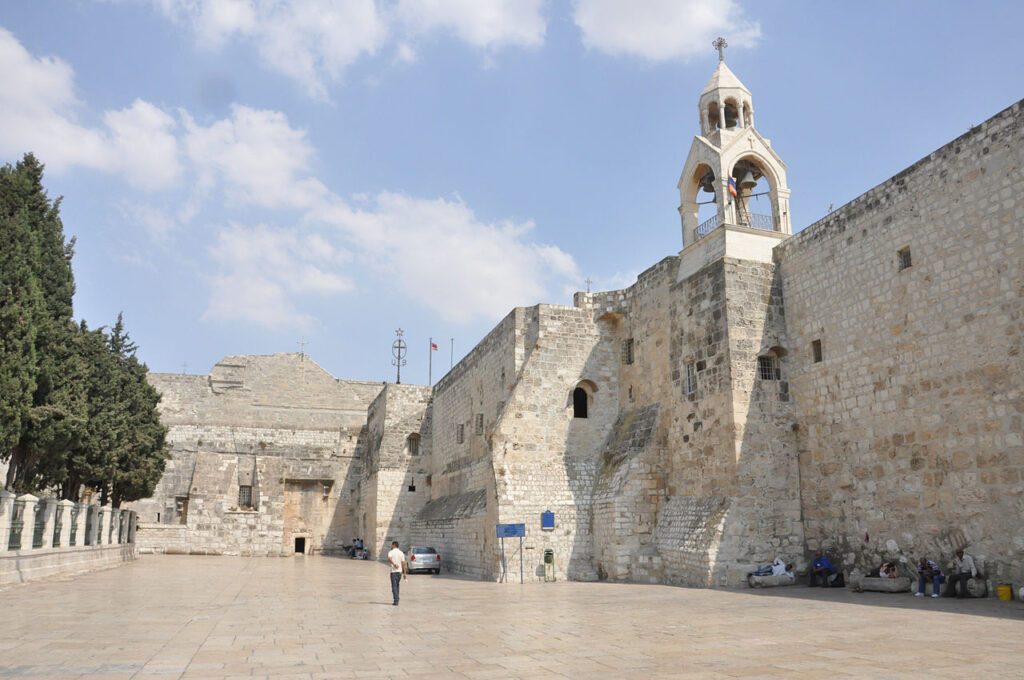
Basilica of Sant’Apollinare in Classe, Ravenna (549 AD, Byzantine)
On the Adriatic coast, near the faded glory of ancient Ravenna, Sant’Apollinare soars above sea-tinged fields. From the marble-sheathed nave to the gleaming apse mosaic depicting Saint Apollinaris in an Edenic landscape, the church remains a touchstone for Byzantine art. Its long aisle, luminous windows, and vivid colors evoke both the Roman past and the mystical aspirations of Eastern Christianity.
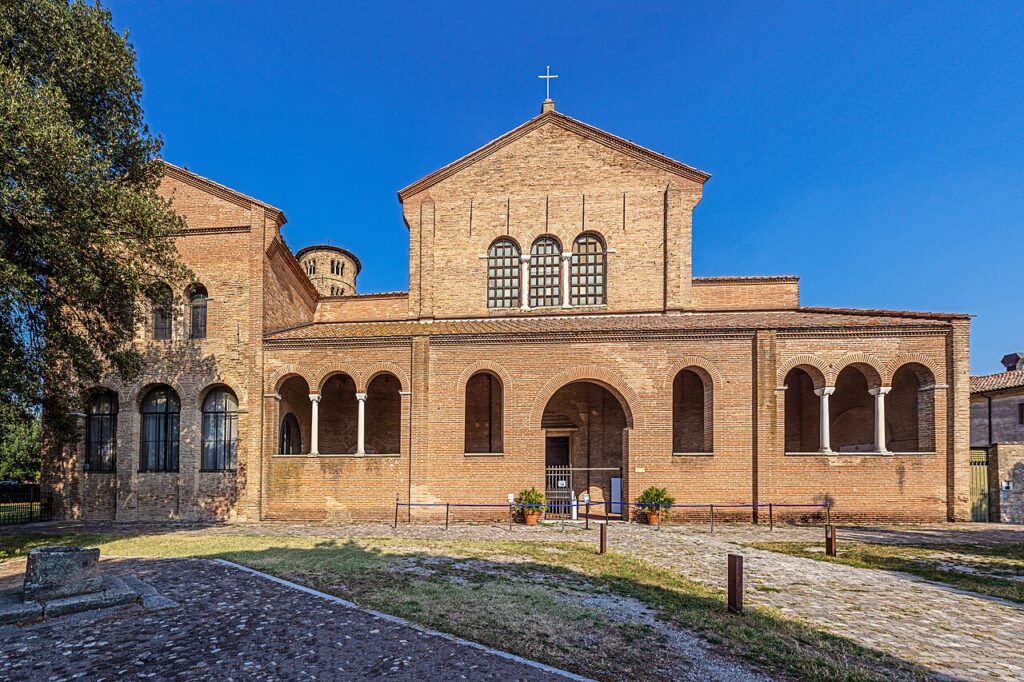
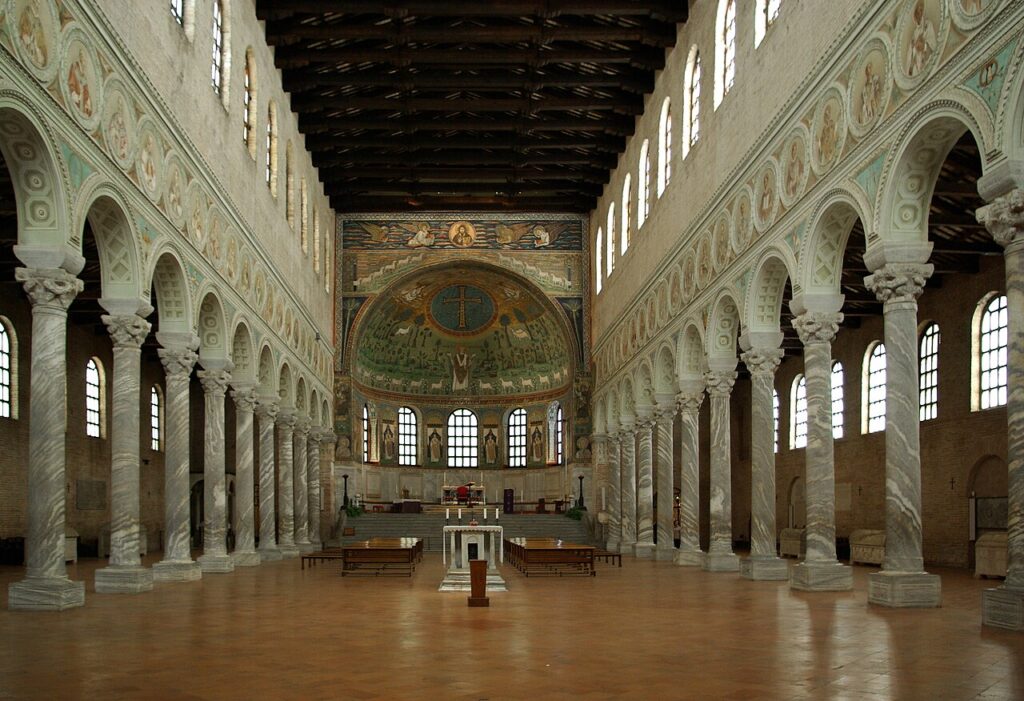
Hagia Sophia, Istanbul (537 AD, Byzantine)
Few buildings have ever matched the drama of Hagia Sophia. Built in a fever of imperial ambition by Emperor Justinian and his architects Anthemius and Isidore, its immense, floating dome astonished contemporaries and still beguiles modern visitors. The engineering marvel, with its base ringed with light and seeming to defy gravity, became the spiritual and architectural lodestar for centuries of church-building across East and West. The vast nave, colonnaded aisles, and rain of gold mosaic all work together to deliver a cosmic vision; to step inside is to step into the heavens themselves.
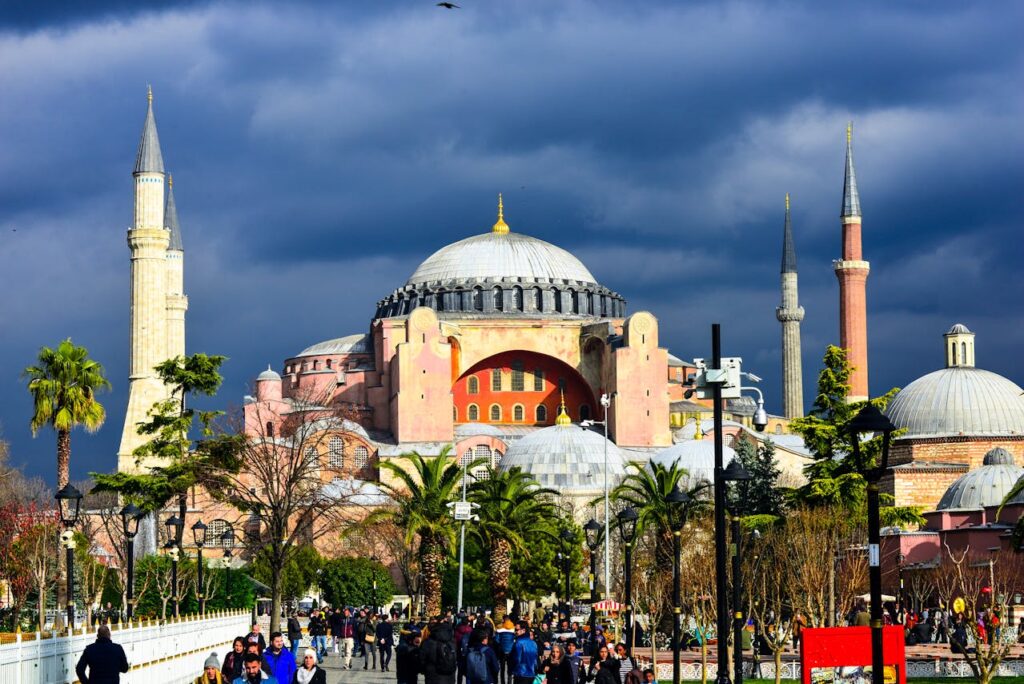
Panagia Ekatontapiliani, Parikia (326 AD, Early Christian/Byzantine)
On the sunlit island of Paros, the Panagia Ekatontapiliani (the Church of 100 Doors) is a palimpsest of ages, displaying early Christian bones overlain with Byzantine additions and its octagonal baptistery now one of the best preserved. Cloisters and vaulted corridors provide shade and mystery, while the domed sanctuary tells of local innovation and centuries of continuous faith. Rare survivals such as this one stand as a testament to resilient communities and the timeless pull of sacred architecture.
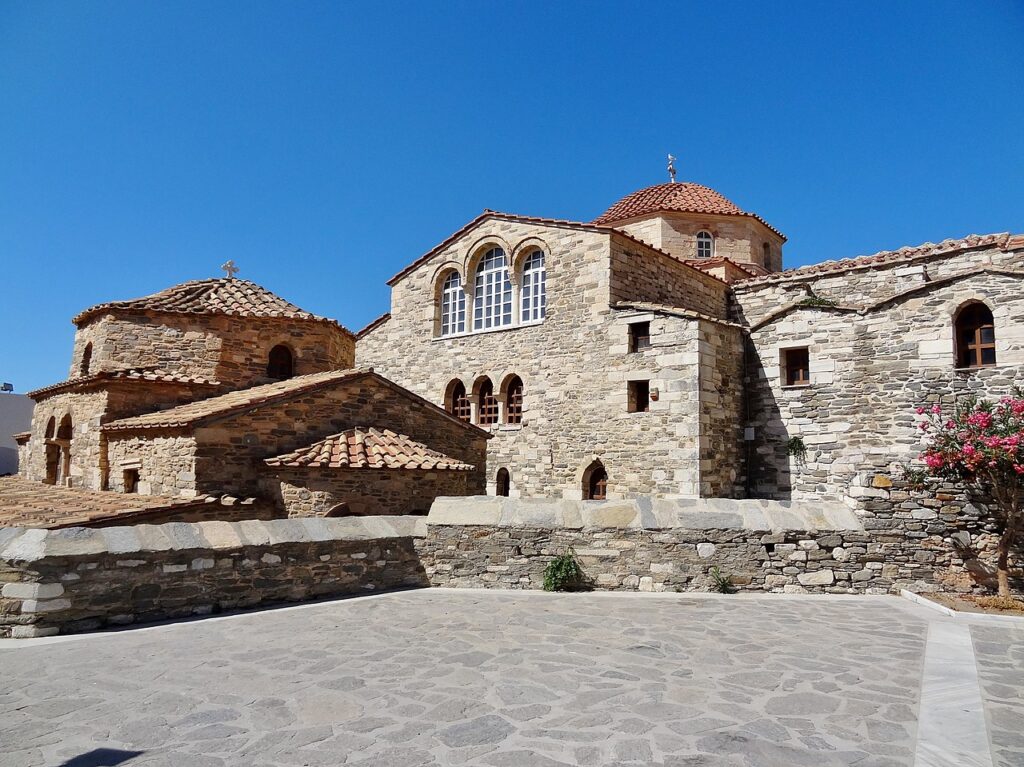
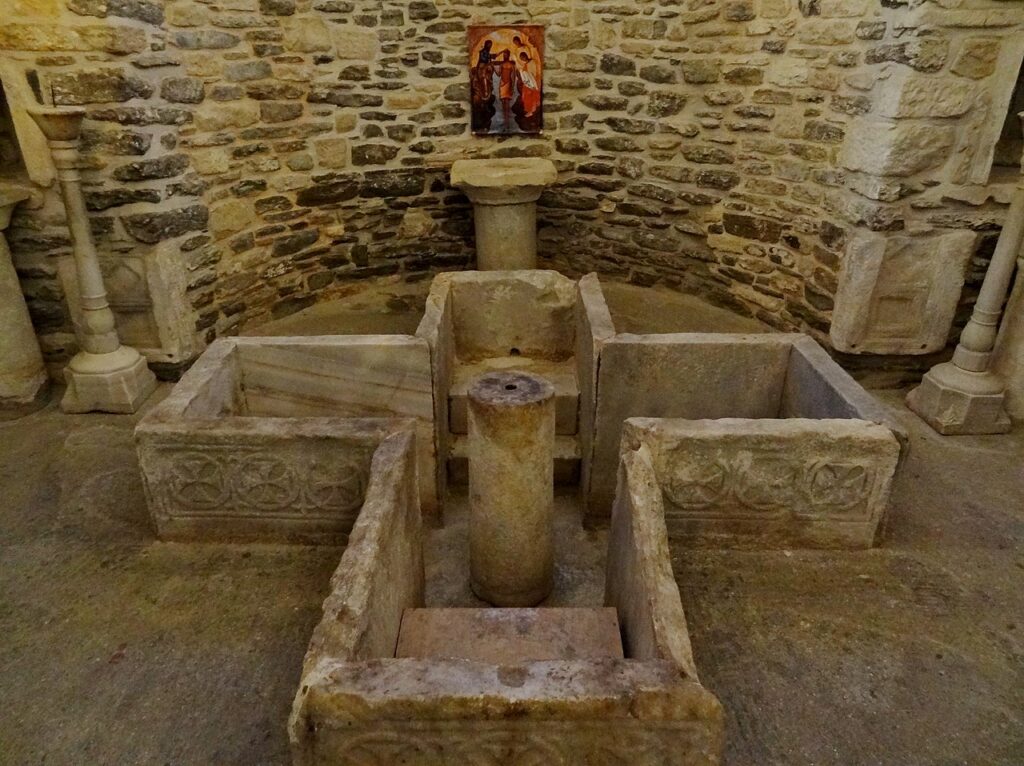
Echoes Through the Centuries
The imprint of these formative centuries is easy to spot in Mediterranean skylines even today. Most churches, regardless of their period, preserve the spatial template of apse, nave, aisles, and entry forecourt originally set down by the early basilicas. Byzantine domes also reappear in later Romanesque and Renaissance churches, and the shimmer of mosaic continues to inspire contemporary sanctuaries. Innovations in engineering, the choreography of sacred space, and the use of light as both practical and mystical medium are all gifts from the fourth to seventh centuries. These elements nourish the Mediterranean’s architectural imagination to this day.
For Further Exploration
To continue this journey, explore UNESCO World Heritage listings for Ravenna’s mosaics, Constantinople’s monuments, and Bethlehem’s holy sites. For the armchair traveler, virtual tours and academic archives (such as the “Corpus of Byzantine Churches” or “Early Christian Art and Architecture” on Smarthistory) offer a window into these spellbinding spaces.
Unearth the past in stone, mosaic, and story. The early Mediterranean church is much more than a relic of faith; it is a living lesson in the power of space to encode hope, memory, and the sacred.
References and Suggested Reading:
- “Early Christian Art and Architecture,” Smarthistory:
https://smarthistory.org/early-christian-art-and-architecture-after-constantine/ - Wikipedia, “Byzantine Architecture”:
https://en.wikipedia.org/wiki/Byzantine_architecture - Ravenna’s Early Christian Monuments, UNESCO World Heritage Centre:
https://whc.unesco.org/en/list/788/ - “Key Features of Byzantine Architecture,” Parametric Architecture:
https://parametric-architecture.com/key-features-byzantine-architecture/ - “Early Christianity and Byzantine Art,” Introduction to Art Open Textbook:
https://boisestate.pressbooks.pub/arthistory/chapter/early-christianity-byzantine-art/
Let these ancient masterpieces be a call to wander, to wonder, and to witness how bold faith shaped the bones and soul of the Mediterranean world.
If our work has inspired you, helped you grow, or simply brought a little warmth to your day, consider supporting Thalysia.com with a small donation. Your contribution helps us continue exploring ancient landscapes, documenting local traditions, and celebrating the art of living well.
